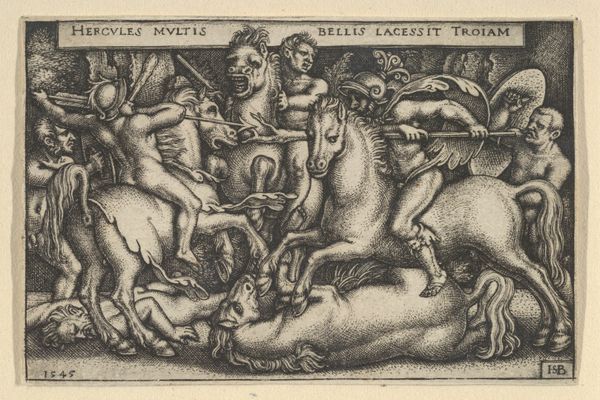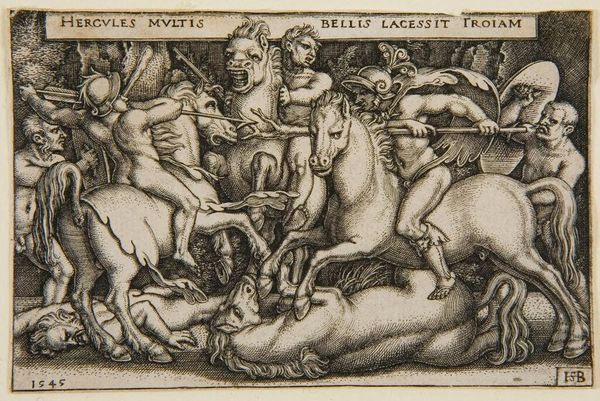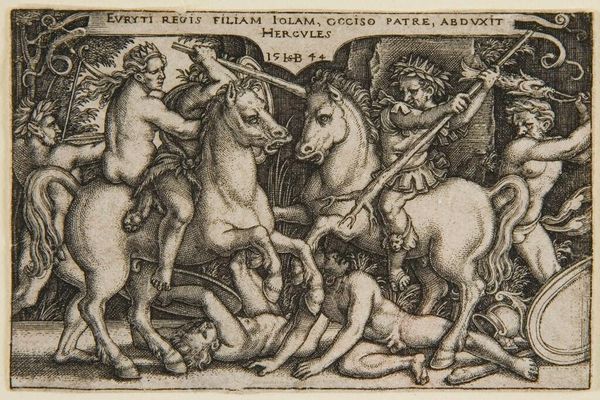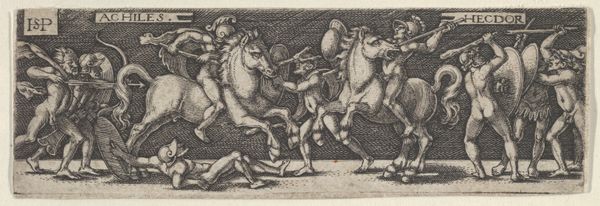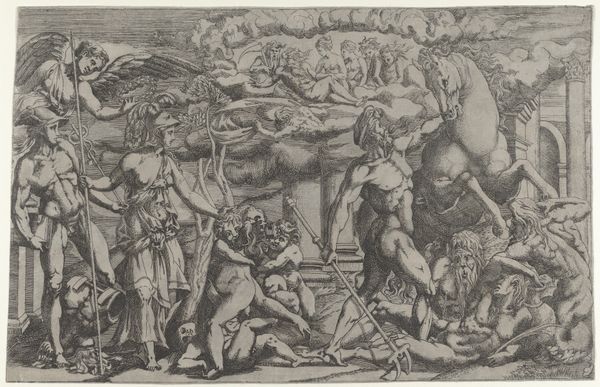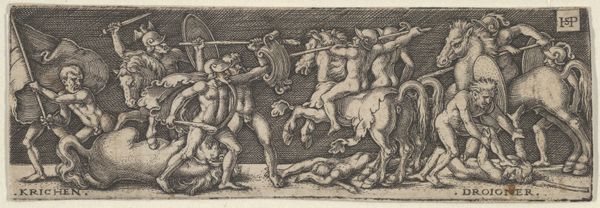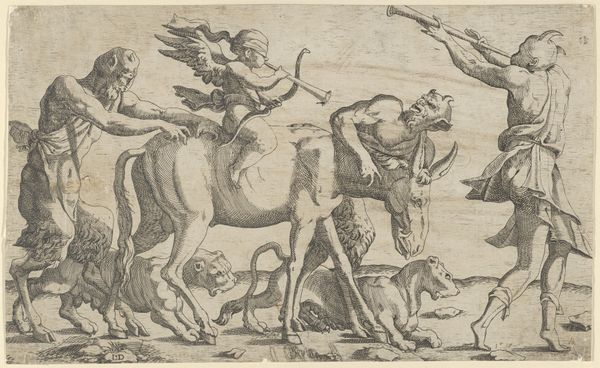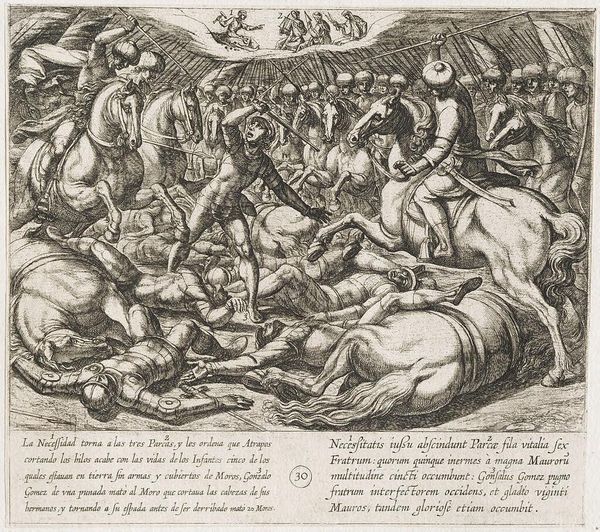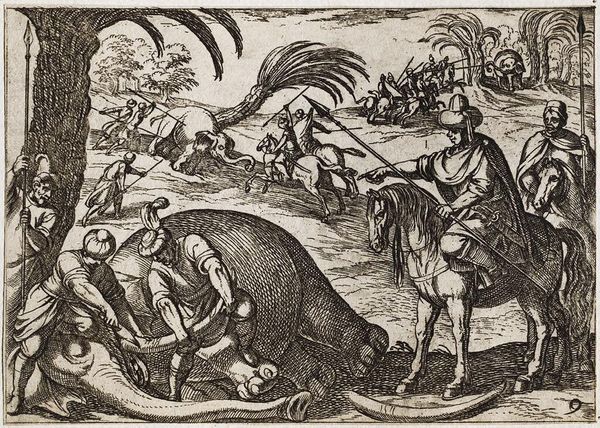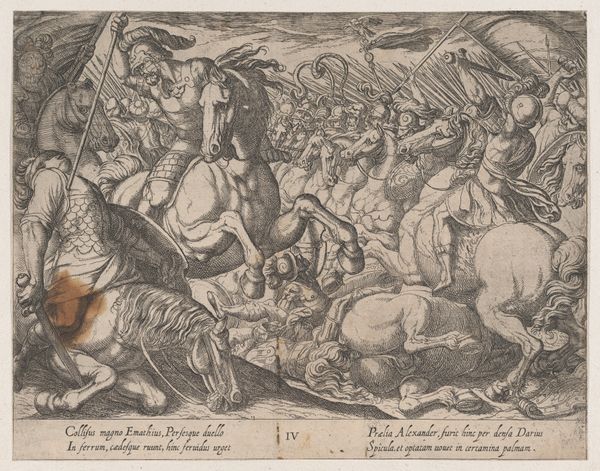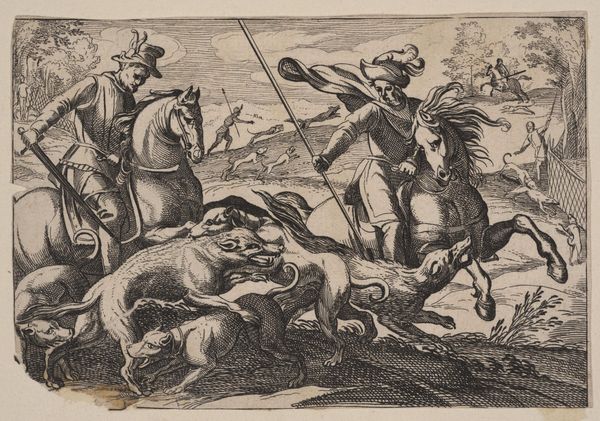
drawing, print, engraving
#
pencil drawn
#
drawing
# print
#
figuration
#
11_renaissance
#
pencil drawing
#
history-painting
#
engraving
Dimensions: 2 × 3 in. (5.08 × 7.62 cm) (sheet)
Copyright: Public Domain
Editor: This engraving, “Hercules Fighting the Trojans,” was created by Sebald Beham in 1545. It’s a chaotic scene, and I'm immediately struck by the sheer violence depicted. How do you interpret this work within its historical context? Curator: Well, let's start by thinking about the 16th century. This was a period of immense upheaval, right? The Reformation was challenging established religious authorities, and new social orders were emerging. In that light, what does it mean to depict Hercules, this symbol of masculine strength, engaged in such brutal conflict? Editor: It seems like a straightforward celebration of power, perhaps even justification of violence? Curator: It could be, but let’s dig deeper. Consider the title itself. Is Beham simply illustrating a classical myth, or is he commenting on contemporary conflicts? The sack of Troy has been used throughout history to talk about the perils of hubris, the horrors of war… Does this image challenge or reinforce those notions, especially in the context of early modern Europe where issues of justice were contested and complex? Editor: So, rather than a celebration of power, it might be a commentary on the destructive nature of conflict, a warning against unchecked aggression. And given the religious and political strife of the time, it could also serve as commentary on conflicts during the Reformation. Curator: Precisely. And let’s also think about the circulation of prints in the 16th century. Who would have viewed this? What sort of dialogue did this engraving create at the time? And can it create one now about similar power struggles and cultural anxieties? Editor: It makes you think about the role of art not just as documentation but as a form of social critique, especially relevant given today’s conflicts. Thanks, that really reframes my initial perception of this work. Curator: Absolutely, and it prompts me to think about how Beham’s imagery resonates in our contemporary world.
Comments
minneapolisinstituteofart almost 2 years ago
⋮
The legendary strongman Hercules was born to the god Zeus and a mortal named Alcmena. This union so incensed Zeus’s wife Hera that she made life almost unbearable for the hero. Her ire resulted in him undertaking a series of tasks, known as the Twelve Labors of Hercules. Sebald Beham challenged his audience’s knowledge of the classical text, engraving three actual labors and nine scenes of Hercules’ exploits before and after his labors. After completing his tasks, Hercules heads off to do battle in Troy. Beham learned from Albrecht Dürer’s horse studies, which Beham published under his own name.
Join the conversation
Join millions of artists and users on Artera today and experience the ultimate creative platform.
